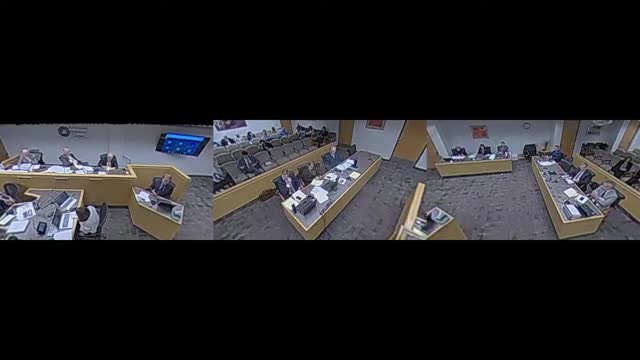Utah Commission proposes strategies for sharing climate costs with utility ratepayers
March 23, 2025 | Utah Public Service Commission, Utah Subcommittees, Commissions and Task Forces, Utah Legislative Branch, Utah
This article was created by AI summarizing key points discussed. AI makes mistakes, so for full details and context, please refer to the video of the full meeting. Please report any errors so we can fix them. Report an error »

In a pivotal government meeting held in Utah, discussions centered around the pressing issue of climate-induced costs and their implications for electricity ratepayers. As the sun dipped below the horizon, casting a warm glow over the city hall, experts gathered to address the urgent need for innovative solutions to manage the escalating risks associated with climate change, particularly wildfire risks.
Dr. Mitchell, a key speaker at the Phase III Hearing on DAO Docket Issues, emphasized the necessity of distributing climate-related costs between ratepayers and utility shareholders. He proposed three distinct approaches to tackle the rising costs of excess liability insurance premiums, which are increasingly influenced by climate change. The first option suggested a static fifty-fifty sharing of these costs, motivating the utility to manage its insurance premiums effectively. The second option introduced a flexible sharing band that could shift to a seventy-thirty ratio if the utility actively pursued emission reduction strategies.
The third, more unconventional approach, proposed that the Commission deny cost recovery for climate-related expenses from electricity rates, suggesting that such costs should instead be borne by taxpayers through state or federal support. This option, while radical, aims to protect ratepayers from the financial burden of climate impacts, drawing a parallel to the national flood insurance program.
Dr. Mitchell's testimony highlighted the urgency of addressing these climate challenges, noting that the electricity sector in Utah is responsible for nearly half of the state's greenhouse gas emissions. He argued that without significant emission reductions, the impacts of climate change would continue to escalate, threatening the well-being of Utah residents.
The meeting also touched on the importance of a comprehensive climate resilience strategy, which would not only address current wildfire risks but also anticipate future challenges. Dr. Mitchell pointed out that relying solely on historical data to assess wildfire risks could lead to costly mistakes, as the frequency and severity of wildfires are changing due to climate change.
As the meeting concluded, the Commission was left with a clear message: the time for action is now. With innovative solutions on the table and a growing recognition of the urgency of climate change, Utah stands at a crossroads, poised to shape its energy future while balancing environmental stewardship with economic development. The decisions made in this meeting could very well determine the trajectory of the state's response to climate-induced challenges in the years to come.
Dr. Mitchell, a key speaker at the Phase III Hearing on DAO Docket Issues, emphasized the necessity of distributing climate-related costs between ratepayers and utility shareholders. He proposed three distinct approaches to tackle the rising costs of excess liability insurance premiums, which are increasingly influenced by climate change. The first option suggested a static fifty-fifty sharing of these costs, motivating the utility to manage its insurance premiums effectively. The second option introduced a flexible sharing band that could shift to a seventy-thirty ratio if the utility actively pursued emission reduction strategies.
The third, more unconventional approach, proposed that the Commission deny cost recovery for climate-related expenses from electricity rates, suggesting that such costs should instead be borne by taxpayers through state or federal support. This option, while radical, aims to protect ratepayers from the financial burden of climate impacts, drawing a parallel to the national flood insurance program.
Dr. Mitchell's testimony highlighted the urgency of addressing these climate challenges, noting that the electricity sector in Utah is responsible for nearly half of the state's greenhouse gas emissions. He argued that without significant emission reductions, the impacts of climate change would continue to escalate, threatening the well-being of Utah residents.
The meeting also touched on the importance of a comprehensive climate resilience strategy, which would not only address current wildfire risks but also anticipate future challenges. Dr. Mitchell pointed out that relying solely on historical data to assess wildfire risks could lead to costly mistakes, as the frequency and severity of wildfires are changing due to climate change.
As the meeting concluded, the Commission was left with a clear message: the time for action is now. With innovative solutions on the table and a growing recognition of the urgency of climate change, Utah stands at a crossroads, poised to shape its energy future while balancing environmental stewardship with economic development. The decisions made in this meeting could very well determine the trajectory of the state's response to climate-induced challenges in the years to come.
View full meeting
This article is based on a recent meeting—watch the full video and explore the complete transcript for deeper insights into the discussion.
View full meeting

